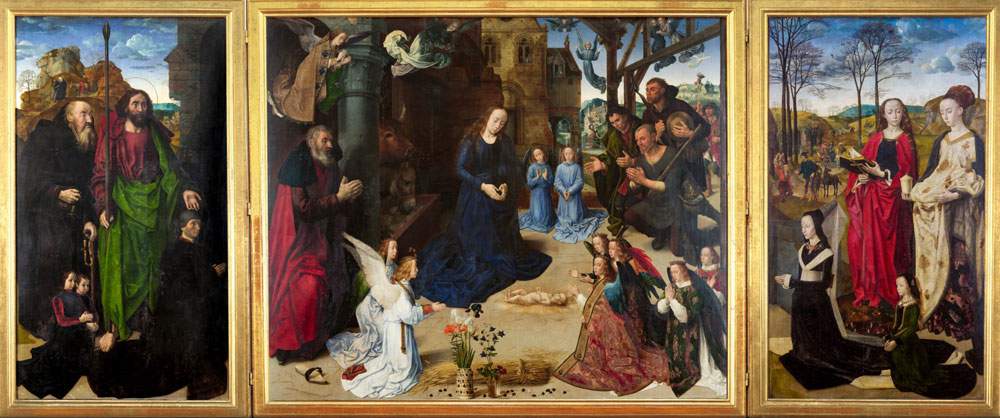On the occasion of Christmas, from December 23 the Uffizi Galleries will offer three virtual gifts to everyone. A virtual exhibition dedicated to the famous Portinari Triptych by Flemish artist Hugo van der Goes will be opened on the official website, while two special videos will be visible on the Florentine museum’s Facebook page: one dedicated to theAdoration of the Child by Gherardo delle Notti (from Dec. 24), and the other will be a Christmas Special video story dedicated to children (Dec. 25).
The virtual exhibition aims to analyze the masterpiece by Hugo van der Goes, a Renaissance work preserved in the Uffizi. Visitors will have the opportunity for a very close look at all the details that make up the painting and the refined painting technique with which it was made. Consisting of a central panel depicting theAdoration of the Shepherds and two side panels depicting the patrons accompanied by their patron saints, the monumental triptych was painted by the artist in Flanders between 1473 and 1478 on commission from Tommaso di Folco Portinari, a Florentine banker and agent of the Banco Mediceo in Bruges and an influential adviser to the Burgundian court. The triptych was then shipped to Florence where it arrived, after an adventurous journey by sea and river, on May 28, 1483 to be displayed in the church of Sant’Egidio attached to the Spedale di Santa Maria Nuova. The most impressive Flemish masterpiece exhibited in the city immediately aroused enormous curiosity and admiration: artists such as Filippino Lippi, Domenico Ghirlandaio, Luca Signorelli and Leonardo da Vinci were greatly impressed by the brilliant effects of the oil technique and the revolutionary realism of the depiction.
Coordinated and curated by Cristina Gnoni Mavarelli, art historian and curator of the Uffizi Galleries, the virtual tour will be divided into sections detailing the history, the protagonists of the work and its complex iconography. What’s more, the extraordinary fashion and costumes of the characters will be illustrated by the curator of the Prato Textile Museum Daniela Degl’Innocenti, and the sumptuous jewelry worn by members of the Portinari family and angels will be interpreted by art historian Silvia Malaguzzi.
The video that will be shared on the Facebook page dedicated to theAdoration of the Child by Dutch painter Gerrit van Honthorst will narrate the masterpiece created between 1619 and 1620 by Gherardo delle Notti, among the most famous and evocative nocturnes in art history. In the work, Mary, Joseph and two angels gaze lovingly at the swaddled infant Jesus, who, giving off light from his body, illuminates and warms their faces. Illustrating the painting will be art historian Monica Alderotti.
Finally, the Christmas Special video will be online on Dec. 25 and will tell a close-up account of the adventure of a group of children who, accompanied by a “Santa Claus Guide,” go on a discovery tour of the Uffizi masterpieces by browsing through the rooms of the closed museum.
“For Christmas this year the Uffizi is offering three virtual, but very concrete gifts,” commented Uffizi Galleries Director Eike Schmidt. “An opportunity to spend the holiday season among our masterpieces. If security measures require us to be apart from our loved ones, we can still be together in the name of art, made available to all, with special attention to children.”
Pictured is Hugo van der Goes, Adoration of the Shepherds with Angels and Saints Thomas, Anthony Abbot, Margaret, Mary Magdalene and the Portinari Family (c. 1478; oil on panel, 274 x 652 cm; Florence, Uffizi Galleries).
 |
| Uffizi, virtual exhibition and special videos in celebration of Christmas |
Warning: the translation into English of the original Italian article was created using automatic tools. We undertake to review all articles, but we do not guarantee the total absence of inaccuracies in the translation due to the program. You can find the original by clicking on the ITA button. If you find any mistake,please contact us.